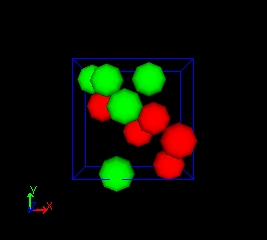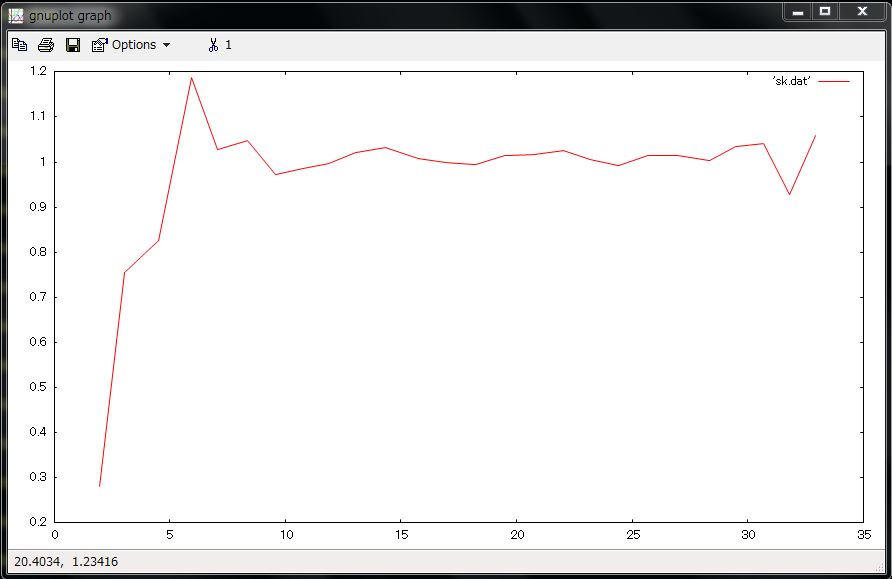- List of Backups
- View the diff.
- View the diff current.
- View the source.
- Go to Install.
- 1 (2009-07-31 (Fri) 10:28:00)
- 2 (2009-08-04 (Tue) 13:17:19)
- 3 (2009-08-04 (Tue) 16:36:24)
- 4 (2009-08-05 (Wed) 05:51:43)
- 5 (2009-08-05 (Wed) 05:53:39)
- 6 (2009-08-05 (Wed) 15:36:54)
- 7 (2009-08-06 (Thu) 14:10:38)
- 8 (2009-08-07 (Fri) 09:18:21)
- 9 (2009-08-07 (Fri) 09:21:09)
- 10 (2009-08-10 (Mon) 11:35:19)
- 11 (2009-08-11 (Tue) 01:51:22)
- 12 (2009-08-24 (Mon) 10:53:28)
- 13 (2009-08-25 (Tue) 08:50:29)
- 14 (2010-03-12 (Fri) 07:26:51)
- 15 (2011-03-29 (Tue) 01:50:26)
- 16 (2011-05-23 (Mon) 03:39:52)
- 17 (2011-05-25 (Wed) 05:25:42)
- 18 (2011-08-15 (Mon) 02:30:53)
- 19 (2013-06-07 (Fri) 08:00:35)
- 20 (2013-06-07 (Fri) 09:03:32)
- 21 (2013-06-10 (Mon) 16:55:40)
- 22 (2013-06-10 (Mon) 23:18:54)
- 23 (2013-06-11 (Tue) 08:46:35)
- 24 (2013-06-12 (Wed) 08:17:35)
- 25 (2013-06-12 (Wed) 12:45:32)
- 26 (2013-06-12 (Wed) 13:49:47)
- 27 (2013-06-15 (Sat) 06:36:21)
- 28 (2013-06-17 (Mon) 08:55:27)
- 29 (2013-06-17 (Mon) 09:05:20)
- 30 (2013-06-17 (Mon) 13:37:58)
- 31 (2013-06-21 (Fri) 03:55:15)
- 32 (2013-06-25 (Tue) 07:30:27)
- 33 (2013-11-13 (Wed) 05:16:52)
- 34 (2014-10-12 (Sun) 09:36:55)
- 35 (2014-10-12 (Sun) 09:39:17)
- 36 (2014-10-21 (Tue) 13:01:18)
- 37 (2014-10-21 (Tue) 13:35:59)
- 38 (2014-10-23 (Thu) 16:42:16)
- 39 (2015-01-19 (Mon) 14:18:51)
- 40 (2015-11-09 (Mon) 09:10:05)
- 41 (2015-11-09 (Mon) 09:12:00)
- 42 (2016-01-27 (Wed) 13:07:03)
- 43 (2016-01-27 (Wed) 13:09:00)
- 44 (2016-02-27 (Sat) 11:23:53)
- 45 (2017-04-04 (Tue) 08:18:10)
- 46 (2017-04-04 (Tue) 08:25:08)
- 47 (2017-09-21 (Thu) 05:47:07)
- 48 (2017-10-08 (Sun) 17:03:13)
- 49 (2018-02-09 (Fri) 10:04:06)
- 50 (2018-02-10 (Sat) 10:33:28)
- 51 (2018-02-11 (Sun) 11:02:08)
- 52 (2018-03-06 (Tue) 11:43:00)
- 53 (2018-04-01 (Sun) 02:35:58)
- 54 (2018-04-01 (Sun) 05:41:30)
- 55 (2018-04-01 (Sun) 06:00:21)
- 56 (2018-04-01 (Sun) 13:13:50)
- 57 (2018-04-02 (Mon) 03:27:40)
Step-by-step instructions to install & run KAPSEL †
The following things are needed to use KAPSEL.
- Windows (with Cygwin) or Linux
- gcc
- GOURMET2013 (included in OCTA2013)
- KAPSEL source code (kapsel3.**.zip)
STEP 0: Linux or Windows? †
- To build KAPSEL on Linux, goto STEP 1.
- To build KAPSEL on Windows, install "Cygwin" first, then goto STEP 1. Be sure to include "gcc", "make" (both exist under "Devel" tree).
- KAPSEL can be build also on Mac OS-X. (not officially supported)
STEP 1: Download and install OCTA/GOURMET †
- Visit OCTA-BBS and Login. Registration is required if you haven't yet complete it.
- For Linux
- Follow "DOWNLOAD" -> "OCTA2013" -> "OCTA2013 for linux iso image".
- Download "OCTA2013LINUX.ISO" and follow the instructions to install OCTA2013.
- For Windows
- Follow "DOWNLOAD" -> "OCTA2013" -> "OCTA2013 for Windows 32/64bit iso image".
- Download "OCTA2013WIN.ISO" and follow the instructions to install OCTA2013.
STEP 2: Build "libplatform" †
- "libplatform" is an I/O library developed by OCTA project. One needs this library to access to UDF-formatted files.
- For Linux:
> su > cd /usr/local/OCTA2013/GOURMET_2013/src > ./configure > make > make install
- For Windows:
- Logon Windows with an administrator authorization
- Open Cygwin terminal window
$ ln -s /cygdrive/c/OCTA2013/ /usr/local/. $ cd /usr/local/OCTA2013/GOURMET_2013/src $ ./configure $ make $ make install
- See manuals for more detailed information on libplatform
- English: &ref(): File not found: "libplatform_eng.pdf" at page "Install";
- Japanese: &ref(): File not found: "libplatform_jpn.pdf" at page "Install";
STEP 3: Download "KAPSEL" source code †
- You can download the source code from here.
- Source code &ref(): File not found: "kapsel3.02.zip" at page "Install";
STEP 4: Build "KAPSEL" binary executable †
> unzip kapsel3.0.zip > cd kapsel3.0 > make 'ENV=CYGWIN' (Cygwin on Windows) or > make 'ENV=GCC' (gcc on Linux) or > make 'ENV=ICC' (icc on Linux) or > make 'ENV=ICC_MKL_OMP' (icc + MKL + OpenMP on Linux) or > make clean (clean-up working files)
STEP 5: Test run †
> cd UDF > ../kapsel -Iinput.udf -Ooutput.udf -Ddefine.udf -Rrestart.udf #using input.udf as input #using output.udf as output #using define.udf as definition #using restart.udf as restart # # Navier_Stokes eq. selected. ...
- If you see a command-line output as shown above, KAPSEL has been successfully built and run.
STEP 6: Visualization of simulation data †
- The sample input.udf conduct a simulation of sedimentation of 5-heavier + 5-lighter particles in Newtonian fluid represented by 32x32x32 CFD grid points. It takes less than a minute to be completed. If this sample successfully run, "output.udf" will be created. You can visualize various simulation data using python script from Gourmet. Three simple examples are shown below.
- Common procedure
- Start GOURMET
- Open "output.udf" ("File" -> "Open" -> Open "output.udf").
- Watching variables on Gourmet
- Instantaneous positions and velocities of all the particles can be seen as variables in "Particles[]". Use slide bar at the bottom of GOURMET viewer window to see variables at different time steps.
- Making an animation on GOURMET
- Go down to "Python" panel, and click "Load"
- Open "particleshow.py", and click "Run"
- A new window will open, then click the playback button there.
- Using gnuplot on GOURMET
- Go down to "Python" panel, and click "Load"
- Open "plot.py", and click "Run"
- Go up to "View" box, and check "Table"
- Go left and select "Graph Sheet[]".
- go down to "Plot" panel, and type the following in the command box.
> plot 'plot.dat' using 2:7 with lines
- Click "Plot", then you will see the time evoluation of Vx of the 1st particle.
STEP 7: Analyzing simulation data †
- The history of simulation run (instantaneous positions and velocities of particles) is stored in "output.udf". One can access to this file by one of the following methods.
- Python program. Read the manual below.
- English: &ref(): File not found: "pythoninterface_eng.pdf" at page "Install";
- Japanese: &ref(): File not found: "PythonInterface_jpn.pdf" at page "Install";
- "sk.py" is a sample python script to calculate the static structure factor S(k) from the temporal particle positions stored in "output.udf". It requires the "numpy" package to handle array variables. You can read and edit the script for your own purposes.
- For Windows: "Start Menu" > "All Programs" > "OCTA2013" > "StartGourmetTerm?"
> python sk.py > gnuplot >> plot 'sk.dat' w line
- Fortran or C program with libplatform (library to access UDF). Read the manual below.
- English: &ref(): File not found: "libplatform_eng.pdf" at page "Install";
- Japanese: &ref(): File not found: "libplatform_jpn.pdf" at page "Install";
- KAPSEL returns several important data to stderr. It usually appears in command line, but one can redirect stderr to a file on csh and tcsh
> ../kapsel -Iinput.udf -Ooutput.udf -Ddefine.udf -Rrestart.udf >& out
or on sh, bash, and Windows command prompt# ../kapsel -Iinput.udf -Ooutput.udf -Ddefine.udf -Rrestart.udf 2> out


